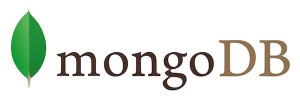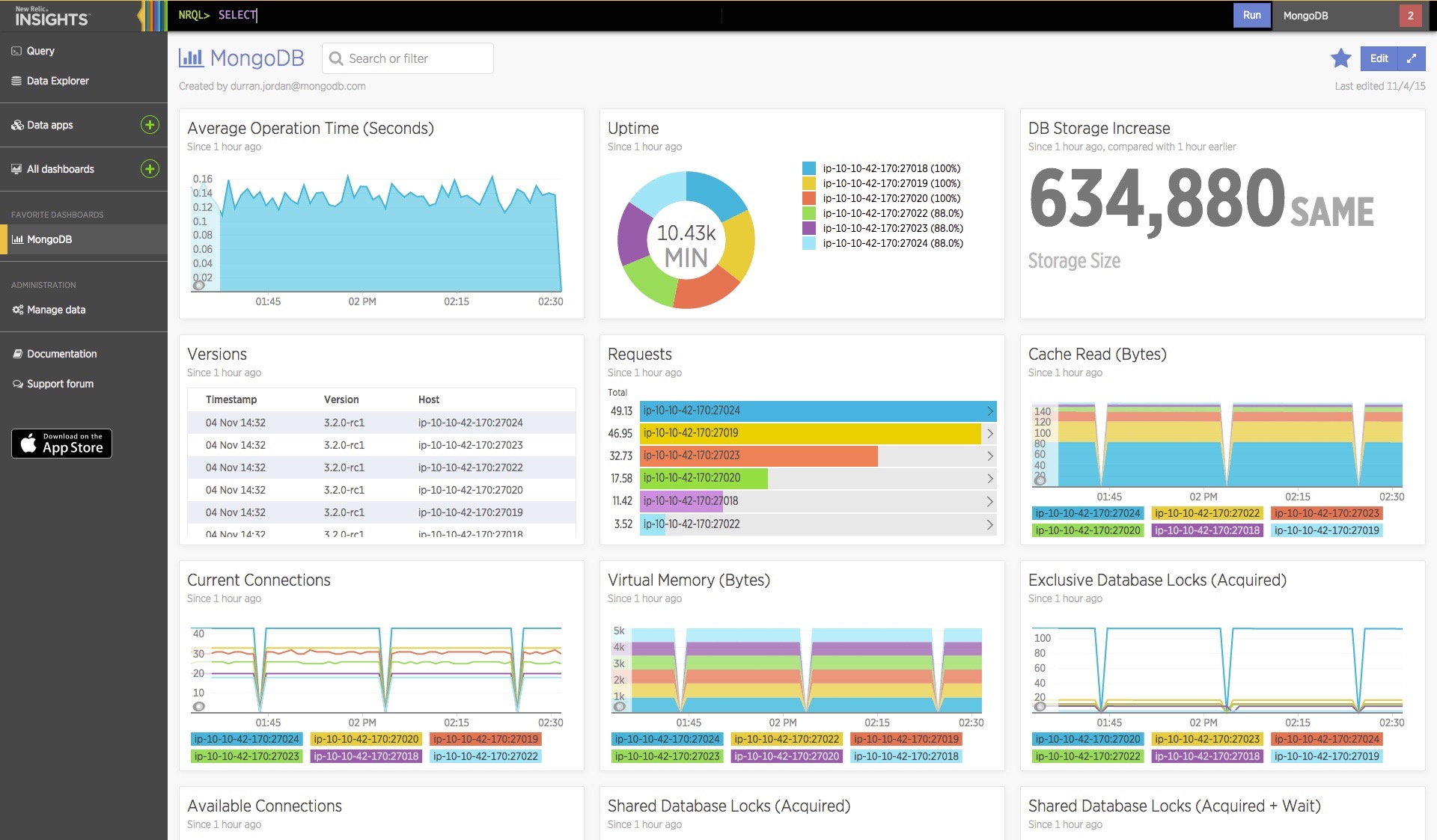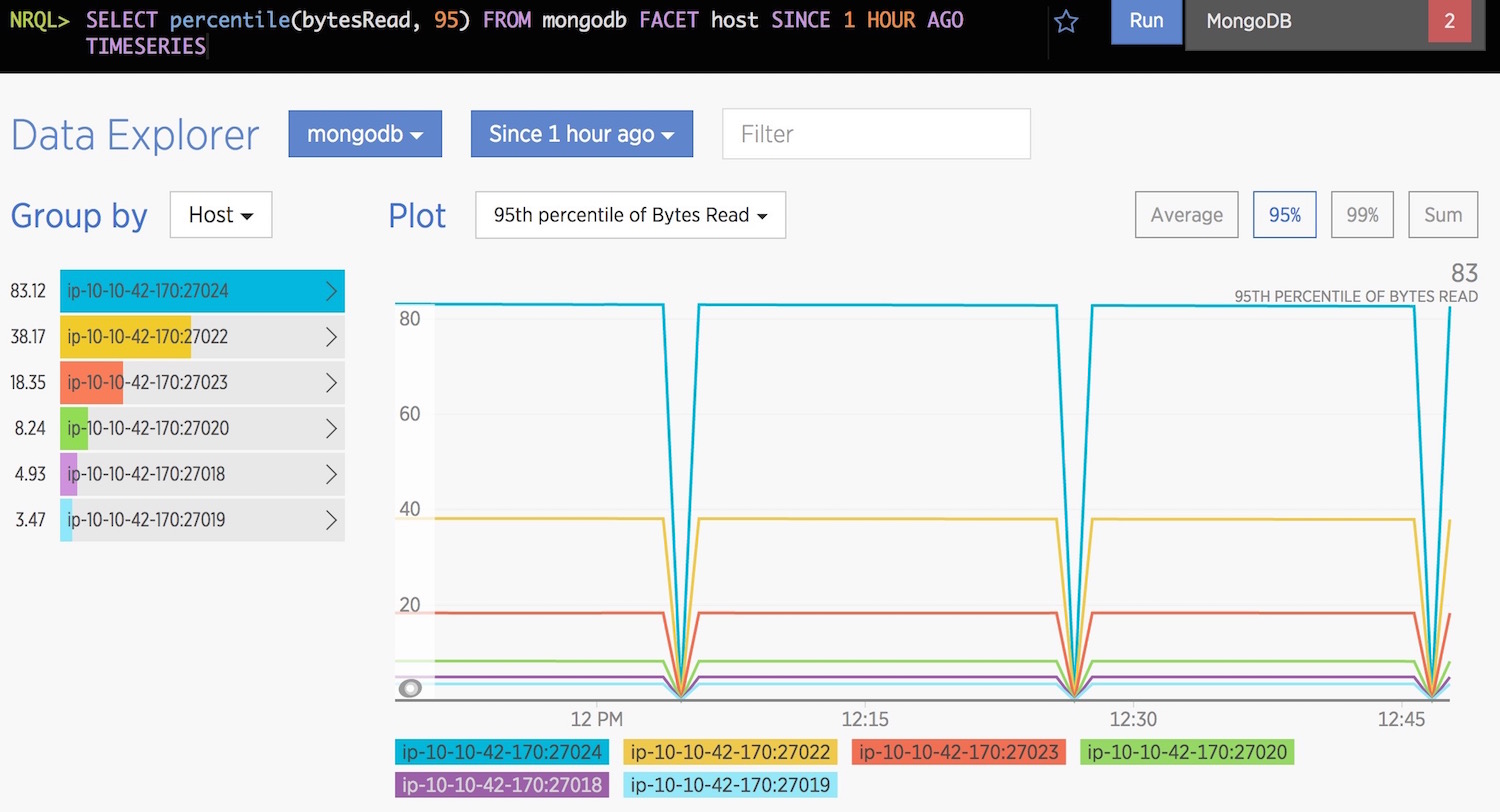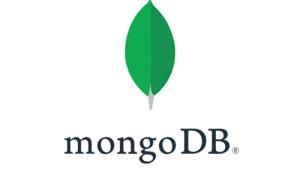Software analytics doesn’t stop at application performance monitoring. To truly understand how your app is performing, you need a comprehensive view of the full stack: APIs, networks, code-level monitoring, devices … and databases like MongoDB.
We believe this comprehensive view should include the end user experience at the browser or mobile device layer as well as the underpinning infrastructure (AWS EC2, for example) where the application code and its related services live. Because it’s crucial to understand how data access impacts your app’s performance, New Relic and MongoDB recently joined forces to enhance how MongoDB data can be leveraged to make sure your app is firing on all cylinders.
While there have been a handful of community-published and supported integrations between New Relic and MongoDB, this is the first time an officially supported integration has been jointly developed and announced by New Relic and MongoDB, and this is the first MongoDB integration that doesn't require you to download or install anything.
Sam Weaver, Product Manager for Developer Experience at MongoDB, said, “We are thrilled to announce this powerful new connection between the industry’s leading non-relational database and the industry’s leading software analytics platform. We believe the ease-of-use of this integration, coupled with remarkable depth and analytics flexibility, will make it a ‘must have’ for operations teams, application developers, and database administrators.”
More on MongoDB
 MongoDB helps to optimize access time by allowing developers to store data in the shape that the application requires. This means that if need be, all the data can be returned in a single query—with no need to spend extra disk seeks to complete joins across many other tables. MongoDB Ops Manager and MongoDB Cloud Manager give users critical metrics that they can use to help ensure their MongoDB deployment is functioning as expected, and can be used to help identify any potential performance bottlenecks at the database level. MongoDB also makes it possible to automate deployment of new nodes when you need to scale the database as well as configure alerts on key metrics, including email or text message formats (whichever you prefer).
MongoDB helps to optimize access time by allowing developers to store data in the shape that the application requires. This means that if need be, all the data can be returned in a single query—with no need to spend extra disk seeks to complete joins across many other tables. MongoDB Ops Manager and MongoDB Cloud Manager give users critical metrics that they can use to help ensure their MongoDB deployment is functioning as expected, and can be used to help identify any potential performance bottlenecks at the database level. MongoDB also makes it possible to automate deployment of new nodes when you need to scale the database as well as configure alerts on key metrics, including email or text message formats (whichever you prefer).
A new set of MongoDB tools for New Relic users
The new MongoDB integration with New Relic—produced, maintained, and supported by MongoDB—will bring the key MongoDB server metrics found in Cloud Manager into New Relic Plugins and New Relic Insights. The integration will have nothing to install: just copy and paste a couple of keys to get started. The MongoDB-related metrics, events, and visualization added to New Relic will be richer and more useful than any previous MongoDB + New Relic integration.

Complete oversight for operations: Operations teams will now have global oversight of their complete application infrastructure from New Relic’s management UI, using the flexible analytics provided by New Relic to monitor application queries and MongoDB server performance. Ops teams will be able to use these tools to pinpoint possible issues before they disrupt critical business processes. With the New Relic and MongoDB integration, MongoDB health will be able to be monitored alongside the rest of the application, providing a single view into the entire landscape. Developers, operations, and DevOps teams will be able to use this single set of data to make sure everyone is on the same page concerning MongoDB resources and health.


The New Relic + MongoDB integration will provide a number of key benefits:
MongoDB integration with New Relic Insights. A new custom event type (named “mongodb”) will appear automatically in New Relic Insights, with more than 35 attributes for ad hoc analytics and easy dashboard creation.
MongoDB integration with New Relic Plugins. A new MongoDB plugin dashboard will appear automatically in New Relic, prepopulated with charts and tables for visualizing MongoDB health and performance (includes alerting on any MongoDB metric).
New Relic APM agent for Ruby will now support the MongoDB driver APM API. With other languages to follow soon.
Setup will be incredibly easy:
- Copy and paste a New Relic License Key into the MongoDB Ops Manager or Cloud Manager interface.
- Copy and paste a New Relic Insights Insert Key into the MongoDB Ops or Cloud manager interface.
- Install the latest New Relic language agents.
- To find more helpful integrations, try the New Relic Node.js agent
MongoDB + New Relic availability
The MongoDB integration with New Relic Plugins and New Relic Insights will be released into limited beta shortly—please contact 3.2beta@mongodb.com for more information. The New Relic APM Ruby language agent with MongoDB Ruby driver support is generally available today. New Relic APM language agents for Node.js, Python, .NET, PHP, and Java will be released in the coming months.
For more information, see http://newrelic.com/mongodb.
Forward-Looking Statements
This post contains “forward-looking” statements, as that term is defined under the federal securities laws, including but not limited to the release of an integration between New Relic Plugins and New Relic Insights with MongoDB and any features or benefits related thereto, and the availability of APM language agents for Node.js, Python, .NET, PHP, and Java. The achievement or success of the matters covered by such forward-looking statements are based on New Relic’s current assumptions, expectations, and beliefs and are subject to substantial risks, uncertainties, assumptions, and changes in circumstances that may cause New Relic’s actual results, performance, or achievements to differ materially from those expressed or implied in any forward-looking statement. Further information on factors that could affect New Relic’s financial and other results and the forward-looking statements in this post is included in the filings we make with the SEC from time to time, including in New Relic’s most recent Form 10-Q, particularly under the captions “Risk Factors” and “Management’s Discussion and Analysis of Financial Condition and Results of Operations.” Copies of these documents may be obtained by visiting New Relic’s Investor Relations website at http://ir.newrelic.com or the SEC's website at www.sec.gov. New Relic assumes no obligation and does not intend to update these forward-looking statements, except as required by law.
Background image courtesy of Shutterstock.com.
Die in diesem Blog geäußerten Ansichten sind die des Autors und spiegeln nicht unbedingt die Ansichten von New Relic wider. Alle vom Autor angebotenen Lösungen sind umgebungsspezifisch und nicht Teil der kommerziellen Lösungen oder des Supports von New Relic. Bitte besuchen Sie uns exklusiv im Explorers Hub (discuss.newrelic.com) für Fragen und Unterstützung zu diesem Blogbeitrag. Dieser Blog kann Links zu Inhalten auf Websites Dritter enthalten. Durch die Bereitstellung solcher Links übernimmt, garantiert, genehmigt oder billigt New Relic die auf diesen Websites verfügbaren Informationen, Ansichten oder Produkte nicht.




